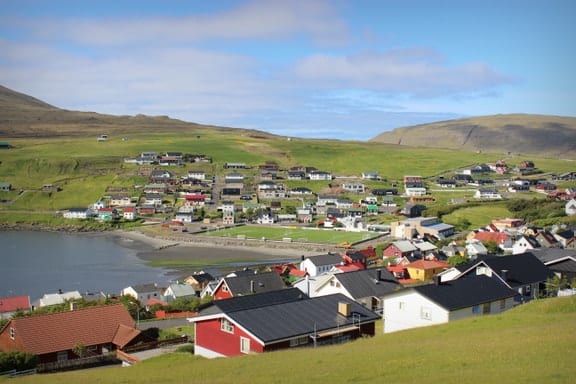I am offering actual travel experiences from me, and other travelers that have had similar encounters. I will also offer reviews, tips, and travel advises on more than fifty countries in the world. This is just getting started, so expect to learn more as I cover more countries. I want to travel to more countries because I am not ready to quit yet. I will tell you the good and bad about each country, so you can be sure of getting honest reviews from me.
Sunday 30 April 2017
Saturday 29 April 2017
Friday 28 April 2017
How I Joined Skillshare and Learned Cool New Skills on the Cheap
The following branded content post is brought to you by Skillshare, a site that I tried out and like a lot. They’re a great site for learning and offered two free months for AK readers (click to redeem two months of Skillshare Premium here), so I was delighted to share this with you!
I love to learn new things. Scratch that — I crave learning new things, whether it’s how to write a new poetry form, how to cook a new dish, or how to do a perfect deadlift.
And while I scratch my learning itch largely by reading, it’s not enough. I’ve been wanting to take some courses lately, and Skillshare has been the perfect introduction into learning more.
Introducing Skillshare
Skillshare is a website filled with more than 15,000 courses. They are taught by video.
Skillshare members can take as many courses as they’d like — and even create a course of their own.
What kinds of courses are there?
Tons — there are more than 15,000 courses altogether. They are courses from complete beginners to hobbyists, professionals, and even advanced courses for experts looking to grow their skill set.
What kinds of classes are there? To start, they have tech classes on mobile development (“How to Make Apps with No Programming Experience”) and game design (“How to Create Pixel Art for Games”).
In the lifestyle section, there are courses on cooking (“How to Make French Macarons”), and design (“Modern Flowers: How to Design a Stunning Centerpiece”).
In the business section, there are courses on marketing (“How to Create Engaging Social Media Content”), freelancing (“How to Start a Shopify Business”), and sales (“How to Create a Sales Funnel That Converts”).
Most popular, however, is the creative section, where there are courses on everything from video production (“How to Shoot With Your iPhone and Edit Like a Pro”) to art (“How to Create Modern Watercolor Florals”) and UI/UX Design (“UI Design in Photoshop From Scratch”).
This is by no means an exhaustive list — these classes are just the beginning of what Skillshare has to offer.
How much does it cost?
Premium Skillshare plans start at $10 per month billed annually or $15 per month month-to-month — much cheaper than I expected. It doesn’t cost much more than Netflix.
However, Adventurous Kate readers can get two months of Skillshare Premium for free through this link.
My Skillshare Experience — Three Different Classes
I decided to try out three very different classes to give me an idea of how everything worked.

Course #1: Humor Writing: Write Funny for the Internet by Mike Lacher
I’ve been wanting to take a comedy writing classes for a long time, but I haven’t wanted to make the time and financial investment right now. This course, taught by a McSweeney’s author, was a fabulous introduction to writing for comedy, using his experience to outline the steps that make your writing funnier and more entertaining.
So much of humor writing is by instinct, but a lot of it can be mapped out by releasing tension almost mathematically. (Most famous was Steve Martin, where he decided to create routines where no tension was released. People hated it.)

Course #2: How to Create a Morning Routine by Derek Franklin
This course, while technically on video, is more of an audio/podcast-type course. For that reason, you could listen to it while cooking or cleaning (which is when I usually listen to podcasts). This is a simple but effective course on steps you can take to create a better morning — something I could definitely stand to do!
More than anything, this course taught me that if you’re starting your routine in the morning, you’re already too late — you will be so much more productive if you plan your morning the night before!

Course #3: Going Pro with Street Photography by trashhand
I love photography, but I’ve been in a bit of a rut lately and wanted to learn new techniques. This course is outstanding for any kind of lifestyle Instagrammer who appears in his or her own photos, and that goes for travel bloggers as well. This course is a detailed way of setting up editorial shoots that work well with your location and create great results for both you and whatever brand you’re working with.
I always lean away from getting photos of myself, unless I’m traveling with a photographer, but after this course, I’m going to work harder on getting those shots.
The Takeaway
I’ll be honest — I’m surprised by how rich the course selection is and the fact that you can learn about so many different kinds of areas with a low risk factor. If you’re interested in drawing, for example, it’s nice that you can try out a drawing class through Skillshare without investing hundreds of dollars up front.
I also appreciated that you can listen to the courses at up to 1.5x the speed, which cuts down on time and works well if you’re paying attention.
Overall, I think Skillshare provides excellent value for money. Which leads me to my next point:
Get Two Months of Skillshare for Free
Want to try it out? I’m giving away two free months of Skillshare to Adventurous Kate readers!
You can access the two free months promotion here.
Should you try it? It’s free! Why not? And you never know. This could be the beginning of a career change or the start of a lifelong learning project.
What kind of course have you been wanting to take?
from Adventurous Kate http://www.adventurouskate.com/how-i-joined-skillshare/
Thursday 27 April 2017
Updates on Giving Back (and an Ask for Help!!)

Today I want to talk about FLYTE, this website’s nonprofit arm.
Over the last few months, I haven’t kept everyone as up to date about the organization as I would like. I apologize for that and promise that, starting today, that will change.
Though quiet, we’ve been doing a lot of work behind the scenes, improving our website and strategy, and creating new partnerships so that FLYTE becomes a more integral part of this website and community.
First, as a refresher, what is FLYTE?
The Foundation for Learning and Youth Travel Education (FLYTE) provides logistical, planning, and financial support to high schools and teachers who want to take their students overseas to give them a real-world context for what they are learning in school — think visiting the D-Day beaches in France or learning about sustainable development in a rainforest in Costa Rica. I started it in 2015 because I believe not enough kids get the chance to travel, see the world, experience other cultures, and realize the practical side to their education!
While many wealthy school districts send students on overseas educational trips, schools and teachers in underserved areas have little or no opportunity to offer their students this experience. Their schools and communities lack the resources to make such a trip happen. I wanted to create an organization that helps people in forgotten parts of the country, because everyone deserves a chance to see and learn about the world!
Thanks to you, FLYTE has raised over $88,000 USD. Last year, we sent a group of students from Atlanta to Mexico and another group from Washington, DC, to Cuba (and we’re preparing for a third trip in June). These students had an amazing time and the trips had a profound impact on them. Here’s what a couple of the students said about their experience:
“This trip means so much to me because having the opportunity to travel outside of the country and my community (an opportunity a lot of peers don’t get to have) is amazing and it really helped open my eyes and see that there is so much more outside of Atlanta.” – Nokio, BEST Academy student
“I would’ve never thought I would have gotten out of my city, where people hurt and do bad things to one another. It makes me want to travel and learn the history of every country in the world!” –Tija, junior at Anacostia High School
So, today, I want to talk about a few other changes with FLYTE:
First, we’ve created a volunteer section on the FLYTE website. Now we’ve created a space where volunteers can help grow the organization with us. I love the passion this community has for FLYTE and I want to better channel that into action. You can visit this page to see our current volunteer needs.
Second, we’re looking for interns. We need help. We’ve tried to do it all alone, but we need some help growing FLYTE. If you live in the NYC area and are fluent in social media, we’d love to have you! We’re a licensed 501(c)(3) and you can get an internship that counts for college credit. You’ll work in my office in NYC with my executive director and the rest of the Nomadic Matt team. You can apply here!
Third, this website now has a dedicated FLYTE page where you can see all the updates and information about the program, school trips, and anything else FLYTE related. Moving forward, FLYTE is going to become a more integral part of this website. Let’s work together as community to show more kids the world (especially in today’s environment where people want to close borders rather than open them)! This page is a work in progress and we’ll be expanding it over the next few weeks!
Fourth, we’re starting weekly emails to donors that will update them on the school, kids, organization, and everything in between. This is something that should have happened a long time ago, and I just never got my act together. My executive director and I are now making it a priority to send out weekly emails to you, so that you will always know what is going on in the organization and the kids, and how your donation is being used.
Fifth, we’ve moved to a new donation platform that will allow us to host donations right on our website (no more going to another website), reduce fees, and accept recurring donations. This new system will ensure that it’s easier to donate and that there are fewer fees when you do! It will be live by tomorrow!
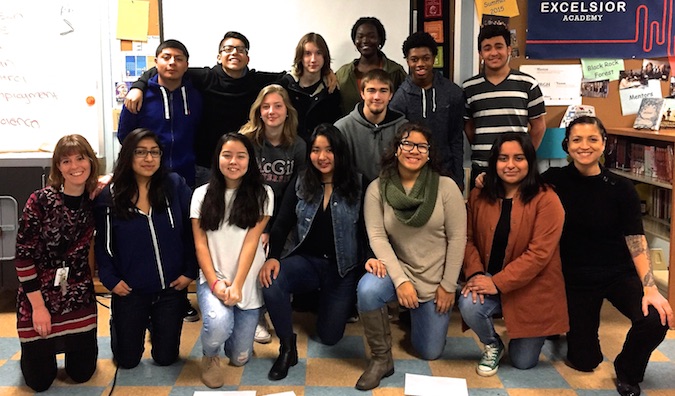
Finally, I need your help again. We’re sending a group of students from Excelsior Academy in Newburgh, NY, to Quito, Ecuador in June! The students will volunteer at Casa Victoria, a grassroots community betterment program located in a struggling section of Quito, and work with local students in an after-school program. Not only will they get to experience another culture, country, and continent but they will also give back while there.
Please help us finish raising money for the students at Excelsior. We’re a little over $20,000 from our goal. I’ll be matching donations up to $10,000, which means that if the community can donate at least that much, we’ll hit our goal and send the kids on their way (any extra money raised will go to future trips)! For most of these students, this will be their first time out of the country so this is a chance to really make an added difference!
Newburgh, once a thriving manufacturing center on the Hudson River, has faced deindustrialization and failed urban renewal attempts that have left the town struggling both financially and socially. Complicating the matter, the Newburgh school district is located in what the FBI has repeatedly named one of the ten most dangerous cities per capita in the United States.
As Excelsior teacher Christine McCartney says, “At Excelsior Academy, we strive to create global citizens who recognize their power to enact change at both the local and global level.”
Here are the students talking about why this is so important to them — and what this trip means to them:
Donations can be made via our Crowdrise page (minimum $10) or via the widget below. Those who donate more than $10 will get some awesome swag:
$50 – For donations of at least this amount, I’m offering my e-books How to Teach English Overseas and The Ultimate Guide to Travel Hacking, and my guides to NYC, Paris, Bangkok, Amsterdam, Stockholm, Thailand, and Hong Kong.
$100 – For donations of at least this amount, you will get the e-books and city guides PLUS a signed copy of the print book How to Travel the World on $50 a Day and a FLYTE t-shirt (US shipping only).
$250 – For donations of at least this amount, you will get all of the above PLUS an hour of travel planning with me, a souvenir from Ecuador, and a thank you card from the students!
Excelsior Academy Goes Global on Crowdrise
If everyone donated just $10, we could fund the entire trip – and many more like it – right away. The more we raise, the more we can help these students and others like them.
Ten bucks isn’t a lot — it’s one less Chipotle meal, a couple of beers, one Old Fashioned, one Uber ride. It’s not much in the grand scheme of things.
If you can’t donate, you can also help by sharing this campaign on Facebook and Twitter, and by emailing your friends, family, cousins, pen pals, coworkers – anyone – and letting them know about this. Help us spread the word about this cause so we can change as many lives as possible. The more people know about this, the better!
Thank you from the bottom of my heart for all your past, present, and future support of this program!
P.S. – Here’s a super awesome and shareable Adobe Spark page that has all the essential information you want to know about FLYTE! You can share this page with your friends, family, and on social media! Please help up spread the word!
P.P.S. – If you’re in the NYC area, I’ll be hosting a meet-up next Thursday at Solar at 7pm. Come down, have fun, meet other travelers, and let’s toast the world!
The post Updates on Giving Back (and an Ask for Help!!) appeared first on Nomadic Matt's Travel Site.
from Nomadic Matt's Travel Site http://www.nomadicmatt.com/travel-blogs/taking-flyte-updates/
Tuesday 25 April 2017
Monday 24 April 2017
Fuji X-T20 Giveaway
It has been a while since we have given away a camera and we are excited once again to host another giveaway for our readers! This time, we are partnering up with our friends at MIOPS to give away a brand spanking new Fuji X-T20! The giveaway rules are going to be quite simple as usual – all you have to do is follow us and MIOPS on Instagram and you will be automatically entered into the drawing. We will announce one lucky random winner at the end of May.
You might be wondering why we are doing an Instagram promotion. Considering that Instagram is a heavily used app among photographers (with over 600 million total users), we thought it would be a good idea to increase our presence in this platform and encourage our readers to contribute content that we can feature on both our Instagram account and on this site! That’s right, our plan is not just to post the photographs of our team members on Instagram, but to also use the platform to promote our readers by featuring their work. Going forward you will be able to tag our Instagram account with a photograph you would like to feature and if we like your work, we will post it on our channel with your account information, so that other readers could follow you.
How to Enter the Giveaway
That’s really it!
Eligibility and Contest Rules
Anyone can enter the contest and the contest is open world-wide. If a winner is chosen from a country other than the USA, an equivalent value of the Fuji X-T20 in US dollars will be wired via PayPal to the winner. Only one Instagram account per person is allowed to participate in the contest. If we suspect the winner to have more than one account, or we see suspicious activity, such as the use of a bot for contest entry, the participant will be automatically disqualified.
How Winner will be Chosen
We will use the following procedure to choose a winner:
- We will randomly select a follower from the Photography Life Instagram account.
- The same user will be looked up on the MIOPS Instagram account.
- If the account is found on both, the winner is finalized and announced.
- If the account is not found, another random follower is chosen.
- The process is repeated until there is a match.
This giveaway is not sponsored, endorsed or administered by, or associated with Instagram.
The post Fuji X-T20 Giveaway appeared first on Photography Life.
from Photography Life https://photographylife.com/fuji-x-t20-giveaway/
Thursday 20 April 2017
How to Travel with a Theme
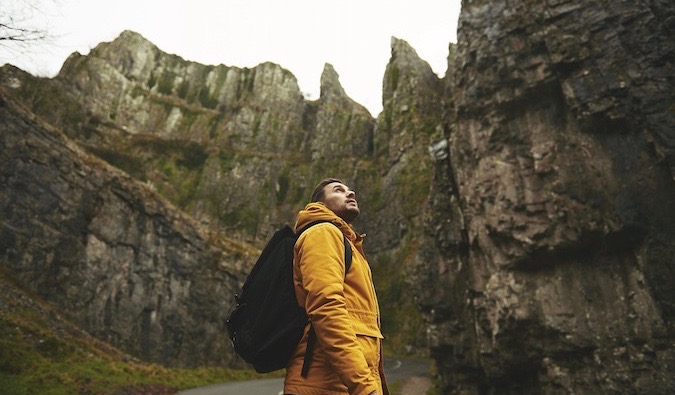
I think I’ve become a “typical tourist.” Ya know, the kind that hits the major tourist sites and a few off-the-path attractions, Yelps a few local restaurants, and moves on. I get my basic overview, learn how to save some money, and continue to the next destination.
And that’s left me feeling that my travels have become too vanilla lately. There’s a spark missing. I mean, I don’t think I go to boring places, but there’s just a part of me that feels there’s been less adventure and pizzazz in my travels, that I haven’t done anything really cool, interesting, or off-beat for a long time.
So, I had an idea:
What if I traveled with a theme?
Instead of just trying to see the usual well-known sites, what if I went with a specific focus in mind?
What if I went to see only the jazz clubs of a city or the modern art museums? Or only hiked trails that begin with the letter M? Or went to learn about a destination’s wine industry? Or decided I’d only eat at Japanese restaurants with a local food expert?
Really, it could be anything, as long as it hyper-focused my travels around one idea that forced me to look at a destination in a different light.
(I’m sure I’m not the first person to think about this, but it’s something I’ve never done before.)
For example, I’ve been to Paris countless times. I’ve hit all the big sites multiple times over. When I returned to Paris recently, I wanted something different and new. I wanted a purpose. So I decided to experience Jazz Age Paris. I wanted my own private Midnight in Paris. I wanted the spirit of the 1920s: jazz, cocktails, and literature.
As a result, I spent time in Montmartre, ate at Les Deux Magots, enjoyed jazz in the Latin Quarter, drank in speakeasies and wine caves, wandered the bookshelves of Shakespeare and Company, and got lost in the streets of the Left Bank. It might not have been the ’20s exactly, but I ate at restaurants I’d never been to, went to music venues I’d never heard of, and saw parts of Paris I didn’t know existed (including a wonderful cobblestone street filled with tiny cafés in a 1900s covered market).
It was the most fun I had had in the City of Lights in a long time…because it was different. Designing my travels around one theme forced me to plan differently.
And it’s something I plan to continue. After being consistently on the road for a decade, I need to spice things up a little bit.
You develop a routine after traveling for a long time. Like everything else, you fall into a certain complacency. Sure, you’re in cool destinations doing cool things — but it’s often the same type of things.
So from now on, instead of just going to places, I’m going with purpose.
(Besides traveling with a theme, I’ve also decided to use only the sharing economy for transportation (when I can), as well as to start looking for more tours on Vayable and meals on EatWith as a way to have more unique and interesting experiences and meet more locals.)
If you’re in a destination for the first time, of course by all means see all the main sites and attractions — but try to add a little theme to your trip that forces you off the beaten path toward some different or unusual attractions, sights, and events.
How to Travel with a Theme (in Five Easy Steps)
So how do you do this? It requires a bit more research than opening up a guidebook! Here’s how I planned my trip:
Step 1 – Pick a Theme
This is an obvious first step. You can’t do any of the other steps without it. For me, I had 1920s Paris on my mind, so I decided I’d try to relive that era. But it could be anything: learning about cheese or wine production, the vegan food scene, jazz culture, the modern art scene — whatever suits your fancy! And, if you’re note sure what theme to pick, think of things that interest you the most and see that destination has stuff related to it or just Google “What is (x) famous for?” and see what comes out!
Step 2 – Research Online (use multiple keywords)
After picking your theme, go more in depth on your search. Local blogs, general travel blogs, our forums, Lonely Planet, Time Out, Yelp — these are all websites I use in my research. Then I go to Google and type in a number of keywords to cover all my bases. For my ’20s trip, for example, I typed in “books on 1920s Paris,” “how to see 1920s Paris,” “1920s Paris sights,” “Paris speakeasies,” and “best jazz clubs in Paris” and found a number of references to consult and various places where I could experience that ’20s vibe. This allowed me to compile a list of potential places to visit.
Step 3 – Plan Your Itinerary
While I didn’t want to overplan any trip, I kind of wanted a plan of attack. There was a lot to see in Paris and I didn’t have much time, so I prioritized what appealed the most. First came the food, then the bars, then the sights. This allowed me to come up with a general framework for my trip. Tagging sites on a Google Map can help you see how far apart things are and then plan your optimal route!
Step 4 – Contact Locals and Experts
Couchsurfing groups and Meetup.com are incredible places to find locals who share your interest. They are going to know the ins and outs of the city and probably have lots of suggestions. Additionally, the group meetups are a fun way to meet locals who share a similar passion, making conversation easier and breaking down that awkward language barrier. Lastly, Vayable, a website that lets locals set up their own walking tours, is also a way to find local experts and unique walking tours.
Step 5 – Read a Book (or Three)
To get context, read a book on the subject. While I already knew a lot about the ’20s Jazz Age, I ended up picking a few more books on the subject:
- When Paris Sizzled by Mary McAuliffe
- Everybody Was So Young by Amanda Vaill
- Shakespeare and Company by Sylvia Beach
- The Crazy Years: Paris in the Twenties by William Wiser
Books also might clue you in to some other attractions too!
****
When you do something for a long time, it can become sort of stale. It can lose its luster. When it comes to travel, sometimes that just means sitting down, relaxing, and watching Netflix until you gain your mojo back. Other times, it means brining back the spice and excitement of those first moments, trying to get that first high back.
I know travel so well that it’s become too easy. I’ll be traveling with a theme much more often, so more of my upcoming posts will be like this Paris post, trying to hunt down cool and unique things about destinations. I already have two new themes in mind for my return to NYC: the best swing dance clubs and the best Japanese izakaya bars. And, for my return to Portland this summer, I’m thinking food trucks only (there’s even a food truck tour!).
Because, as much as I love the popular things (they are popular for a reason), I want to add something a little different and unique into my trips that spices them up in a way I never would have thought about before.
Photo credit: 1
The post How to Travel with a Theme appeared first on Nomadic Matt's Travel Site.
from Nomadic Matt's Travel Site http://www.nomadicmatt.com/travel-blogs/how-to-travel-with-a-theme/
Wednesday 19 April 2017
Sony A9 Announcement
Step aside Canon 1D X Mark II and Nikon D5 – Sony has just announced its A9, a high-end, full-frame sports camera. With a 24 MP stacked CMOS sensor, a whopping 20 fps continuous shooting rate without blackouts, up to 1/32,000 shutter speed (electronic, mechanical up to 1/8000), a 241 RAW image buffer, 693 on-sensor phase detection autofocus points occupying 93% of the viewfinder, AF joystick, full-frame 4K video capture, in-body five-axis image stabilization, fully weather sealed body, larger battery capacity, a built-in Ethernet port and dual SD card slots, the Sony A9 is one serious monster aimed at directly competing with the top-tier DSLR cameras. It is a pricey camera at $4,500 MSRP, but it is still $2K cheaper than the Nikon D5 and offers features the D5 simply cannot compete with. The Sony A9 is a very exciting release for a number of reasons.
First of all, this is the first time a mirrorless camera is aiming at something mirrorless has been struggling with when compared to DSLRs, which is autofocus speed, subject tracking and blackouts. While it is hard to say how well the new AF system on the A9 is going to be compared to high-end DSLR cameras, the message here is clear – Sony is going to do what it takes to make on-sensor AF as good as a dedicated phase-detection AF system. Second, the Sony A9 is a proof of concept that DSLRs have reached their limits for continuous shooting rate due to the presence of the mirror mechanism. While the Canon 1D X Mark II and Nikon D5 are limited to 12-14 fps of continuous shooting, the Sony A9 takes this to a whole new level at 20 fps. If it was not for sensor readout and bandwidth limitation issues, I am sure Sony could have easily gone over 20 fps. Third, the Sony A9 has the world’s first full-frame stacked CMOS sensor:
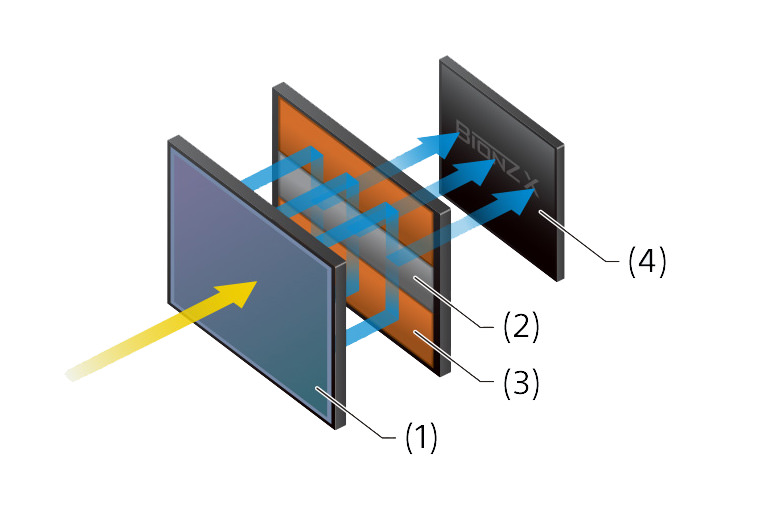
While this might sound gibberish for those who don’t understand sensor technology, a stacked sensor is capable of insanely fast readout speeds, because data is temporarily stored in the integral memory of the sensor (#2 in the above graph) and a high-speed signal processing circuit (#3) is able to retrieve and pass all the data to the image processing engine (#4) much quicker than traditional sensor design that reads data from top to bottom of the pixel area (#1). Because of this sensor technology alone, the camera is going to have massive advantages for not just continuous shooting rates, but also for capturing high-resolution 4K video. In addition, the stacked sensor allows for much quicker analysis of the overall sensor data, which translates to increased focusing performance for both contrast and phase-detection autofocus.
To understand differences between this new stacked sensor technology when compared to a traditional DSLR, take a look at the below video:
As you can see, the stacked sensor on the Sony A9 opens up many opportunities for photographers. When using an electronic shutter, you no longer have to worry about either mirror slap or shutter shock either, which is very impressive.
Fourth, the Sony A9 pretty much lifts the limitations of the traditional autofocus system by allowing phase-detection AF points to be spread pretty much throughout the viewfinder:

You no longer have to worry about focus point spread and focus points being more accurate in the center of the frame. On-sensor phase detection pixels are going to perform very similarly no matter where they are located on the sensor, which means that you could continue tracking a subject even when they are not in the center of the frame. As long as you keep the subject within the viewfinder, you are good to go.
At this point, it is hard to say how good the autofocus system on the Sony A9 is going to be when compared to cameras like Canon 1D X Mark II and Nikon D5, but you can take a look at the below interview with Gene Lower, a professional sports photographer from Arizona who is very pleased with the performance of the camera:
What’s impressive about the A9 is also its huge memory buffer that can fit up to 241 RAW images. With a 20 fps continuous shooting speed, one can continuously capture a scene for 12 seconds, which is more than enough for most sports and wildlife photography needs. The only puzzling part to me is the use of SD cards – I was expecting to see something faster and more powerful like XQD on the Sony A9. Speaking of which, the Sony A9 now has two memory card slots (finally!), but only one of them is UHS-II compatible. I think the idea here is that one would use a UHS-II card for shooting fast action, while the second memory card slot is used primarily for backup and the speed is not as important. I am not sure how Sony is planning to address buffer writing to two memory cards though and I hope that the camera won’t slow down while the second slot is being written to.
The biggest hole that Sony needs to patch as quickly as possible, is lack of good super telephoto options. At this time, the longest native lens Sony has for the FE mount is the newly announced Sony 100-400mm f/4.5-5.6 GM OSS. While it looks like a great lens, it cannot compete with a super telephoto prime in any way. If Sony can quickly crank out 400mm, 500mm and 600mm lenses in the next 12+ months, the Sony A9 will be taken very seriously by many professional photographers. But until then, it will be tough to get sports and wildlife photographers to switch. Sony needs native FE mount super telephoto lenses as quickly as possible – adapting existing glass made for Sony Alpha / Minolta mounts is not going to be a good solution, since lenses need to be able to take advantage of the new technology on the Sony A9.
Fifth, Sony is finally addressing one of the biggest issues with mirrorless cameras – battery life. Thanks to the much more powerful and efficient NP-FZ100 battery, the Sony A9 is capable of shooting many more images (Sony claims 2.2x more battery power) – up to 650 according to CIPA testing. While this might sound still pretty far from a DSLR can do, always take CIPA numbers with a grain of salt. According to the video above, the photographer could get over 1,000 shots and only consumed about a quarter of the battery. So for high-speed shooting and situations where one can turn off the LCD screen for image previews (EVF and LCD screens eat up battery life quickly), I am sure this single battery can be used to take many more shots than 650. If the Sony A9 can yield over 1,000 images from a single battery, that’s already a huge achievement. Also, keep in mind that one can add a battery grip to use two batteries at a time, so the A9 could potentially compete with cameras like Canon 1D X Mark II and Nikon D5 even when it comes to battery life!
Sixth, the Sony A9 obliterates the Nikon D5 for video shooting by being able to use full pixel readout without pixel binning. Thanks to the fast sensor readout, the processor can read 6K of information, then down-sample the footage to 4K, creating video with very little noise. In comparison, the Nikon D5 uses pixel-level data from the sensor, resulting in an unimpressive 1.45x crop, which gives no advantage to resulting video footage. At the same time, nothing is said about being able to output uncompressed video through an HDMI port, something the D5 is capable of doing. Sony is clearly not wanting to make the A9 a premium video camera though – that will probably be left for the future Sony A9S.
Speaking of which, the last point I wanted to bring out was the future A9-series cameras. Clearly, Sony has addressed many concerns that I and many others brought out in our reviews and conversations with Sony executives in regards to issues like battery life, ergonomics (joystick), dual memory card slots, uncompressed RAW, etc. It makes sense for the company to continue releasing different iterations of the Sony A9 for different needs. Within the next year or so, I anticipate Sony to release a super high-resolution Sony A9R that will have similar ergonomics, same battery life and other features introduced on the A9. If Sony prices it out right to be in-line with what the Sony A7R II costs (and hopefully discontinues the A7 series cameras), it will be a killer camera for landscape, architecture, macro and studio photographers. For the movie industry, Sony will probably release a Sony A9S with an amazing low-light sensor that will be able to shoot 4K-6K video at very fast frame rates and full sensor readout.
It is a great time to be a photographer, because technology is opening up so many opportunities. I applaud Sony for being brave to bring out the Sony A9 to challenge Canon and Nikon, and I thank the company engineers and executives for listening to our feedback and concerns over the years. While I was not a fan of the PR move Sony marketing pulled out last week, this particular announcement is definitely something I am very excited about. I cannot wait to get my hands on the A9 and test it out later this year, hopefully with more super telephoto options from Sony.
I hope Canon and Nikon are not just taking notes from this announcement. As I have said many times before, DSLR sales will only be declining in a technology-driven market. I hope the big two are working on something that can compete with the Sony A9 and upcoming A9-series cameras, now that the bar is raised to a whole new level…
Official Press Release
Below is the official press release from Sony:
Sony’s New α9 Camera Revolutionizes the Professional Imaging Market
Groundbreaking Full-frame Mirrorless Camera Delivers Unmatched Speed, Versatility and Usability
- World’s First1 full-frame stacked CMOS sensor, 24.2 MP2 resolution
- Blackout-Free Continuous Shooting3 at up to 20fps4 for up to 241 RAW5/ 362 JPEG6 images
- Silent7, Vibration-free shooting at speeds up to 1/32,000 sec8
- 693 point focal plane phase detection AF points with 60 AF/AE tracking calculations per second
- Extensive professional features including Ethernet port for file transfer, Dual SD card slots and extended battery life
- 5-Axis in-body image stabilization with a 5.0 step1 shutter speed advantage
NEW YORK, Apr. 19, 2017 – Sony Electronics, a worldwide leader in digital imaging and the world’s largest image sensor manufacturer, has today introduced their new revolutionary digital camera, the α9 (model ILCE-9).
The most technologically advanced, innovative digital camera that Sony has ever created, the new α9 offers a level of imaging performance that is simply unmatched by any camera ever created – mirrorless, SLR or otherwise.
The new camera offers many impressive capabilities that are simply not possible with a modern digital SLR camera including high-speed, blackout-free continuous shooting3 at up to 20fps4, 60 AF/AE tracking calculations per second10, a maximum shutter speed of up to 1/32,000 second8 and much more. These are made possible thanks to its 35mm full-frame stacked Exmor RS™ CMOS sensor – the world’s first of its kind – which enables data speed processing at up to 20x faster than previous Sony full-frame mirrorless cameras11. This unique sensor is paired with a brand new, upgraded BIONZ X processing engine and front end LSI that maximizes overall performance.
This industry-leading speed and innovative silent shooting7 is combined with a focusing system that features an incredible 693 phase detection AF points. Covering approximately 93% of the frame, the focusing system ensures that even the fastest moving subjects are reliably captured and tracked across the frame.
The new α9 also features a vibration free, fully electronic, completely silent anti-distortion shutter7 with absolutely no mechanical mirror or shutter noise, making it an extremely powerful photographic tool for any shooting situation that demands quiet operation. To ensure maximum usability and reliability, the camera features a new Z battery with approximately 2.2x the capacity of W batteries, as well as dual SD media card slots, including one that supports UHS-II cards. An Ethernet port (wired LAN terminal) is available as well, and there is a wide variety of new settings, controls and customizability options that are essential for working pros.
“This camera breaks through all barriers and limitations of today’s professional digital cameras, with an overall feature set that simply cannot be matched considering the restrictions of mechanical SLR cameras” said Neal Manowitz, Vice President of Digital Imaging at Sony Electronics. “But what excites us most about the α9 – more than its extensive product specs – is that it allows professionals to see, follow and capture the action in ways that were never before possible, unlocking an endless amount of new creative potential.”
A New Standard of Speed and Focusing Accuracy
Critical to the record-breaking speed of the new α9 is the combination of the new stacked 24.2 MP2 Exmor RS image sensor, new BIONZ X processor and front end LSI.The immense processing power from these new components allows for faster AF/AE calculation while also reducing EVF display latency. The processor and front end LSI are also responsible for the larger continuous shooting buffer, enabling photographers to shoot at a blazing 20 fps4 with continuous AF/AE tracking for up to 362 JPEG6 or 241 RAW5 images.
The camera’s innovative AF system tracks complex, erratic motion with higher accuracy than ever before, with the ability to calculate AF/AE at up to 60 times per second10, regardless of shutter release and frame capture. Further, when the shutter is released while shooting stills, the electronic viewfinder functions with absolutely no blackout, giving the user a seamless live view of their subject at all times12. This feature truly combines all of the benefits of an electronic viewfinder with the immediacy and “in the moment” advantages that not even the finest optical viewfinders can match, and is available in all still image modes including high speed 20 fps4 continuous shooting.
With 693 focal plane phase detection AF points covering approximately 93% of the frame, the camera ensures improved precision and unfailing focus in scenes where focus might otherwise be difficult to achieve. The Fast Hybrid AF system – pairing the speed and excellent tracking performance of phase detection AF with the precision of contrast AF – achieves approximately 25% faster performance when compared with α7R II, ensuring all fast-moving subjects are captured.
Professional Capabilities in a Compact Body
Sony’s new full-frame camera is equipped with a variety of enhanced capabilities that give it a true professional operational style.The α9 features an all-new, high-resolution, high-luminance Quad-VGA OLED Tru-Finder with approximately 3,686k dots for extremely accurate, true-to-life detail reproduction. The new Tru-Finder, which is the highest resolution viewfinder ever for a Sony α camera, incorporates an optical design that includes a double-sided aspherical element, helping it to achieve 0.78x magnification and a level of corner to corner sharpness that is simply outstanding. The EVF also utilizes a ZEISS® T* Coating to greatly reduce reflections, and has a fluorine coating on the outer lens that repels dirt.
This all adds up to a luminance that is 2x higher than the XGA OLED Tru-Finder from the α7R II, creating a viewfinder image with a brightness level that is nearly identical to the actual scene being framed, ensuring the most natural shooting experience. The frame rate of the Tru-Finder is even customizable, with options to set it for 60 fps or 120 fps13 to best match the action.
The α9 is equipped with an innovative 5-axis image stabilization system that provides a shutter speed advantage of 5.0 steps9, ensuring the full resolving power of the new sensor can be realized, even in challenging lighting. Also, with a simple half press of the shutter button, the effect of the image stabilization can be monitored in the viewfinder or on the LCD screen, allowing framing and focus to be accurately checked and continually monitored.
The α9 also offers an Ethernet port (wired LAN terminal), allowing convenient transfer of still image files to a specified FTP server at high-speed, making it an ideal choice for studio photography, high-profile news and sporting events and more. There is a sync terminal as well, enabling external flash units and cables to be connected directly for convenient flash sync.
New Features for Fast Operation
Sony’s new α9 has several new and updated focus functions that support faster, easier focusing in a variety of situations. The camera features a multi-selector joystick on the back of the camera, allowing shooters to easily shift focus point within the frame by pressing the multi-selector in any direction up, down, left or right when shooting in Zone, Flexible Spot or Expanded Flexible Spot focus area modes. The new model also offers touch focusing on the rear LCD screen for easily selecting of and shifting focus towards a desired focus point or subject.New for Sony E-mount cameras, the α9 includes the addition of separate drive mode and focus mode dials, plus a new “AF ON” button that can be pressed to activate autofocus directly when shooting still images or movies.
Additional new capabilities include the “AF Area Registration”, which allows frequently used focus area to be memorized and recalled via custom button assignments. There is also the ability to assign specific settings (exposure, shutter speed, drive mode, etc) to a custom button to be instantly recalled when needed. The camera can memorize and automatically recall the last focus point used in a vertical or horizontal orientation as well, instantly switching back to it when that specific orientation is used again.
For enhanced customization, a “My Menu” feature is available, allowing up to 30 menu items to be registered in a custom menu for instant recall when needed.
Double Battery Life, Double Memory
The innovative α9 camera features an all-new Sony battery (model NP-FZ100) with 2.2x the capacity of previous Sony full-frame models, allowing for much longer shooting performance.Also, based on extensive customer feedback, the new camera offers two separate media card slots, including one for UHS-II media. The same data can simultaneously be recorded to both cards, or the user can choose to separate RAW / JPEG or still images / movies. Movies can also simultaneously be recorded to two cards for backup and more efficient data management.
High Sensitivity and Wide Dynamic Range
The unique design of the α9 image sensor represents the pinnacle of Sony device technology. The 24.2 MP2 full-frame stacked CMOS sensor is back-illuminated, allowing to capture maximum light and produce outstanding, true-to-life image quality. The sensor also enables the diverse ISO range of 100 – 51200, expandable to 50 – 20480014, ensuring optimum image quality with minimum noise at all settings.The enhanced BIONZ X processor plays a large part in image quality as well, as it helps to minimize noise in the higher sensitivity range while also reducing the need to limit ISO sensitivity in situations where the highest quality image is required.
The new α9 also supports uncompressed 14-bit RAW, ensuring users can get the most out of the wide dynamic range of the sensor.
4K Video Capture
The new α9 is very capable as a video camera as well, as it offers 4K (3840x2160p) video recording across the full width of the full-frame image sensor15, 16. When shooting in this format, the camera uses full pixel readout without pixel binning to collect 6K of information, oversampling it to produce high quality 4K footage with exceptional detail and depth. Recording is also available in the popular Super 35mm size.Additionally, the camera can record Full HD at 120 fps at up to 100 Mbps, which allows footage to be reviewed and eventually edited into 4x or 5x slow motion video files in Full HD resolution with AF tracking17.
New Accessories
Sony has released a variety of new accessories to compliment the new α9 camera, including:
- NP-FZ100 Rechargeable Battery – high-capacity battery with approximately 2.2x the capacity of the NP-FW50 W-series battery. It also supports InfoLITHIUM® technology, making it possible to view the remaining battery power as both a percentage display and five step icon on the camera’s LCD screen.
- VG-C3EM Vertical Grip – provides same operation, handling and design as theα9 camera, doubles battery life and allows USB battery-charging via the camera body.
- NPA-MQZ1K Multi-Battery Adaptor Kit – External multi-battery adaptor kit capable of functioning as an external power supply for four Z series batteries and as a quick charger. Kit comes with two packs of NP-FZ100 rechargeable batteries.
- GP-X1EM Grip Extension – Grip extender with same look, feel and design as α9 body. Enables more solid hold on camera.
- FDA-EP18 Eyepiece Cup – eye piece cup with locking mechanism
- BC-QZ1 Battery Charger – quick-charging battery charger. Charges one new Z series battery in approximately 2.5 hours.
- PCK–LG1 Screen Protect Glass Sheet – hard, shatterproof glass screen protector with anti-stain coating to prevent fingerprints. Compatible with touch operation and tilting LCD screen
Pricing and Availability
The Sony α9 Full-frame Interchangeable Lens Camera will ship this May for about $4,500 US and $6,000 CA. It will be sold at a variety of Sony authorized dealers throughout North America.Additional Notes
- As of April 19th, 2017
- Approx. effective
- Electronic shutter mode. At apertures smaller than F11 (F-numbers higher than F11), focus will not track the subject and focus points will be fixed on the first frame. Display updating will be slower at slow shutter speeds.
- “Hi” continuous shooting mode. The maximum frame rate will depend on the shooting mode and lens used. Visit Sony’s support web page for lens compatibility information.
- “Hi” continuous shooting mode, compressed RAW, UHS-II memory card. Sony tests.
- “Hi” continuous shooting mode, UHS-II memory card. Sony tests.
- Silent shooting is possible when Shutter Type is set to “Electronic” and Audio signals is set to “Off.”
- 1/32000 shutter speed is available only in the S and M modes. The highest shutter speed in all other modes is 1/16000.
- CIPA standards. Pitch/yaw stabilization only. Planar T* FE 50mm F1.4 ZA lens. Long exposure NR off.
- At shutter speeds higher than 1/125 sec, smooth and blackout-free live view images are shown in EVF.
- Compared to the front-illuminated CMOS image sensor in the α7 II.
- Display updating will be slower at slow shutter speeds.
- When the auto or electronic shutter mode is selected the viewfinder frame rate is fixed at 60 fps during continuous shooting.
- Still images, mechanical shutter: ISO 100 – 51200 expandable to ISO 50 – 204800. Still images, electronic shutter: ISO 100 – 25600 expandable to ISO 50 – 25600. Movie recording: ISO 100 – 51200 expandable to ISO 100 – 102400.
- In full-frame shooting, the angle of view will be narrower under the following conditions: When [File Format] is set to [XAVC S 4K] and [ Record Setting] is set to [30p]
- Class 10 or higher SDHC/SDXC memory card required for XAVC S format movie recording. UHS Speed Class U3 required for 100Mbps or higher recording.
- Sound not recorded. Class 10 or higher SDHC/SDXC memory card required.
Product Images
Below are additional product images of the Sony A9:
Additional Coverage and Videos
Below you will find additional videos and coverage of the Sony A9:
The post Sony A9 Announcement appeared first on Photography Life.
from Photography Life https://photographylife.com/sony-a9-announcement/
Tuesday 18 April 2017
Synology DS1517+ and DS1817+ for Photography Needs
A couple of days ago, Synology announced its new DS1517+ and DS1817+ storage arrays that caught my attention. I have been using an 8-bay Synology Network Attached Storage (NAS) device for the past few years and as you have seen from my detailed Synology DS1815+ review, it is a very powerful and robust storage solution that allows me to use it not just as a backup device, but also as my primary storage. And when the DS1815+ is paired up with a fireproof and waterproof ioSafe, one can fully automate the backup process and alleviate the associated pains with potentially losing data due to hard drive or storage failure. However, one of the biggest bottlenecks I have been experiencing with any NAS device is network bottlenecks. Even when using link aggregation with several ports, it is impossible to achieve more than 1 Gbit throughput from the same machine, which means that I am always stuck at roughly 125 MB/sec storage speed, even if my storage unit is capable of handling more load (link aggregation can be very beneficial in a multi-user environment). So I have been anxiously waiting for storage companies to start releasing storage arrays that are capable of handling more network throughput, which is why it is exciting to see the new DS1517+ and DS1817+ units.
These powerhouses expand the storage power of existing units by adding a PCIe slot that can be used for either a dedicated 10GbE card, or an adapter that can take dual M.2 SSD drives for cache. With memory configuration expandable up to 16 GB (previously limited to 6 GB) for running different applications / add-on packages, and scalability to add up to 18 additional drives with expansion units, we are dealing with quite a bit of juice to handle heavy loads. Both units will be able to provide quite a bit of sequential throughput when used with 10GbE – the DS1517+ will be able to achieve 1,165 MB/s read and 527 MB/s write speeds, whereas the DS1817+ will be able to push up to 1,179 MB/s read and 542 MB/s write speeds. But the exciting part is the 10Gbit Ethernet option – with the right setup, one can reach those speeds without even needing to aggregate ports, since 10 GbE can handle up to 1250 MB/s through a single port, which is insane!
Here is the back of the new DS1817+, which shows the available PCIe slot on the right side of the chassis:
As you can see, the 4x 1GbE ports capable of link aggregation are still there, but have been moved down from the side to make room for the PCIe slot. Two eSATA ports are also still there, just moved to the bottom as well. As a result, the new DS1817+ is now a little bit taller compared to its predecessor. The system is cooled by the same 2x 120x120x25mm fans to keep the unit and the drives from overheating.
While I am very excited about the option to expand the speed of the storage array via 10 Gigabit Ethernet, I am a bit concerned by the fact that Synology decided to continue using the Intel Atom C2000 processors, which recently have been revealed to randomly fail after prolonged use. I have been using my DS1815+ for over three years now without any issues and I know that Synology could not find any correlation between usage rate and CPU failures either, denying abnormal failure rates on its storage devices, as reported by a number of online resources. Perhaps it could be an issue for those running a Synology NAS 24/7 in a virtualized environment with heavy loads, but I personally do not see it as a problem for a busy photographer.
I will do my best to report on the DS1817+ as soon as I get my hands on one later this year, but in the meantime, if you have any questions regarding storage, please let me know in the comments section below!
The post Synology DS1517+ and DS1817+ for Photography Needs appeared first on Photography Life.
from Photography Life https://photographylife.com/synology-ds1517-and-ds1817-for-photography-needs/
“Do You Have Any Regrets?”
Dear Kate,
There will a come a time when you’re just settling into bed on your friend’s blow-up mattress, tipsy from a night of bar-hopping in a foreign city, browsing Facebook on your phone, when your friend’s good-looking roommate will return home from his own night out.
“Hey Kate, you still awake?”
You could go either way.
“Yeah, I’m up.”
You chat about your respective evenings. He puts on a Blur album; you suggest To Pimp a Butterfly instead. By the time Kendrick sings, “But your flood can be misunderstood,” he’ll have casually slid next to you on the air mattress.
Will it be a fun night? Oh, yes.
But there’s a casualty — it will make things weird with your friend. Your friend who was so kind to offer you a place to stay, to take you out for dinner and drinks, to catch up on everything that’s been happening in the years since you drank buckets together in ramshackle bars built by the water, cockroaches scurrying by your feet.
You’re over 30 now. And you still pull that shit?
You could have yawned and said, “Yeah, I’m going to bed now, though.”
There will come a time when one of your longtime blogger friends will be in Bangkok at the same time as you. Delighted to finally meet in person, you plan to grab lunch together before you fly south the next day.
He doesn’t eat seafood, but you do. Served up is a giant plate of shrimp, dripping in fresh lime juice and punctuated by zests of garlic and chili. This isn’t pad grapow on Soi Rambuttri — this is real Thai food for Thai people. And perhaps that’s why you’re caught off guard.
You’re fine as you catch your early morning flight to Ranong. You’re fine as you cross the choppy waters to Koh Phayam, gazing at Myanmar in the distance. You’re fine on the kamikaze motorbike ride to your guesthouse as you drink in the warm breezes of the Andaman Sea.
36 hours after your fateful meal, it hits you. Stomach cramps. Nausea. Fever. Diarrhea. Running to the bathroom four times an hour and feeling like you’re going to die each time.
Years into your long-term travels, this is only the second time you’ve fallen victim to food poisoning; you’re proud of your cast-iron stomach. But everyone has their kryptonite.
The diarrhea isn’t even the worst part. Soon, the stomach cramps get so bad that you can’t sit up — you can only rock back and forth on the bed, moaning in place. Staying still is impossible. Sitting up is impossible. All you can do is whimper and turn down offers of plain sticky rice from the concerned ladies checking on you.
The next day, it’s all over. You eat a bag of plain potato chips. They taste like sunshine.
Years later, you’ll invite that same blogger friend into your New York apartment for a slice of strawberry rhubarb pie from Long Island. Nobody will get sick that time.
Maybe, Kate, you shouldn’t order that plate of shrimp in Bangkok.
There will come a time when you randomly reply to a press release, saying you’d love to come visit their destination — and holy shit, it actually works.
It’s the Faroe Islands. You’re going to the Faroe fucking Islands. Nobody goes there. And their people want you there.
But flights from the UK are limited. What makes the most sense is to do a four-night trip over a long weekend, they suggest.
And you hesitate.
You have a boyfriend who is so good to you. And weekends are the times when you get to spend the most time with him. And you feel so guilty being away so much of the time, even though there are visa-related reasons for that, and being present on the weekend is the least you could do for him.
“Could we do it during the week instead?” you ask.
Of course. The only thing is, due to that limited flight schedule, you could only fit three nights, not four.
That’s fine. Of course you’d be okay with that.
You land in the islands, rent a car, and burst into shrieks of happiness as you drive down the island of Vágar. This is as close as you’ve been to being at the end of the world.
Driving down those smooth roads on the islands, hiking with puffins on Mykines, getting that iconic shot of the waterfall at Gasadalur (not to mention accidentally driving your car into a ditch). Gripping the steering wheel as you needle your way toward Gjogv, dining on lamb with fermented salt, sailing into dark caves to the sounds of Nordic singing.
This place is everything.
Your heart aches fiercely when it’s time to leave — you would do anything to stay longer.
Well, you could have stayed longer. And you chose not to. You didn’t even ask your boyfriend for his input; you assumed this was what he wanted.
Years later, that airline route won’t even exist anymore, and you’ll by chance sit next to Visit Faroe Islands reps at a conference. You’ll reminisce about how much you fell in love with their islands and how much they loved your content.
Maybe, Kate, you should go for four days instead of three.
There will come many times when you’ll be in the Italian countryside drinking homemade red wine out of repurposed Gatorade bottles.
This is almost always a mistake.
Homemade wine is much stronger than what you can buy in the store. Often twice as strong. And while it’s local and organic, it has way more of the stuff that settles behind your eyeballs and gives you a blinding headache the next day.
In fact, the following morning, after a twisty car ride through the Tuscan countryside, you’ll beg for the van to stop and dash off, vomiting between two olive trees.
Because yes, Kate, you do know you’re prone to severe motion sickness, ever since you couldn’t keep yourself from retching out the car door on camping trips to New Hampshire as a kid. But let’s not pretend that the wine wasn’t a factor.
For the sake of your body, Kate, not to mention your pride, you should skip the home-fermented brew altogether.
There will come a time when a nice boy asks you to dance.
Of course you say yes.
He takes your hand and pulls you onto the dance floor, light on his feet and holding you at just the right closeness.
It doesn’t hurt that he bears a resemblance to a certain good-looking friend of yours. The friend that can make you draw your breath in sharply with just a glance. The friend who has had a lovely girlfriend for as long as you’ve known him.
This guy appears to be more available, and a better dancer to boot. You dance to a second song. A third. You try some goofy steps and laugh through a fourth.
He whirls you around and pauses, looking into your eyes. “I really want to kiss you.”
You’re dumbfounded. “What…did you say?”
“I want to kiss you now.”
You heard him the first time.
“I…I shouldn’t.”
Why did you say no? You wanted to kiss him. But you had a narrative in mind for the night and that kiss would have taken it in a completely different direction.
Feeling a bit sheepish, you exchange numbers with the nice dancer boy and pose for a selfie. You’ll never see each other again.
Kiss him, Kate. It will go nowhere, but who cares? Imagine the narrative you could have chosen instead. Writers always need stories, after all.
from Adventurous Kate http://www.adventurouskate.com/do-you-have-any-regrets/
Monday 17 April 2017
How to Eat Around the World on a Vegan Diet
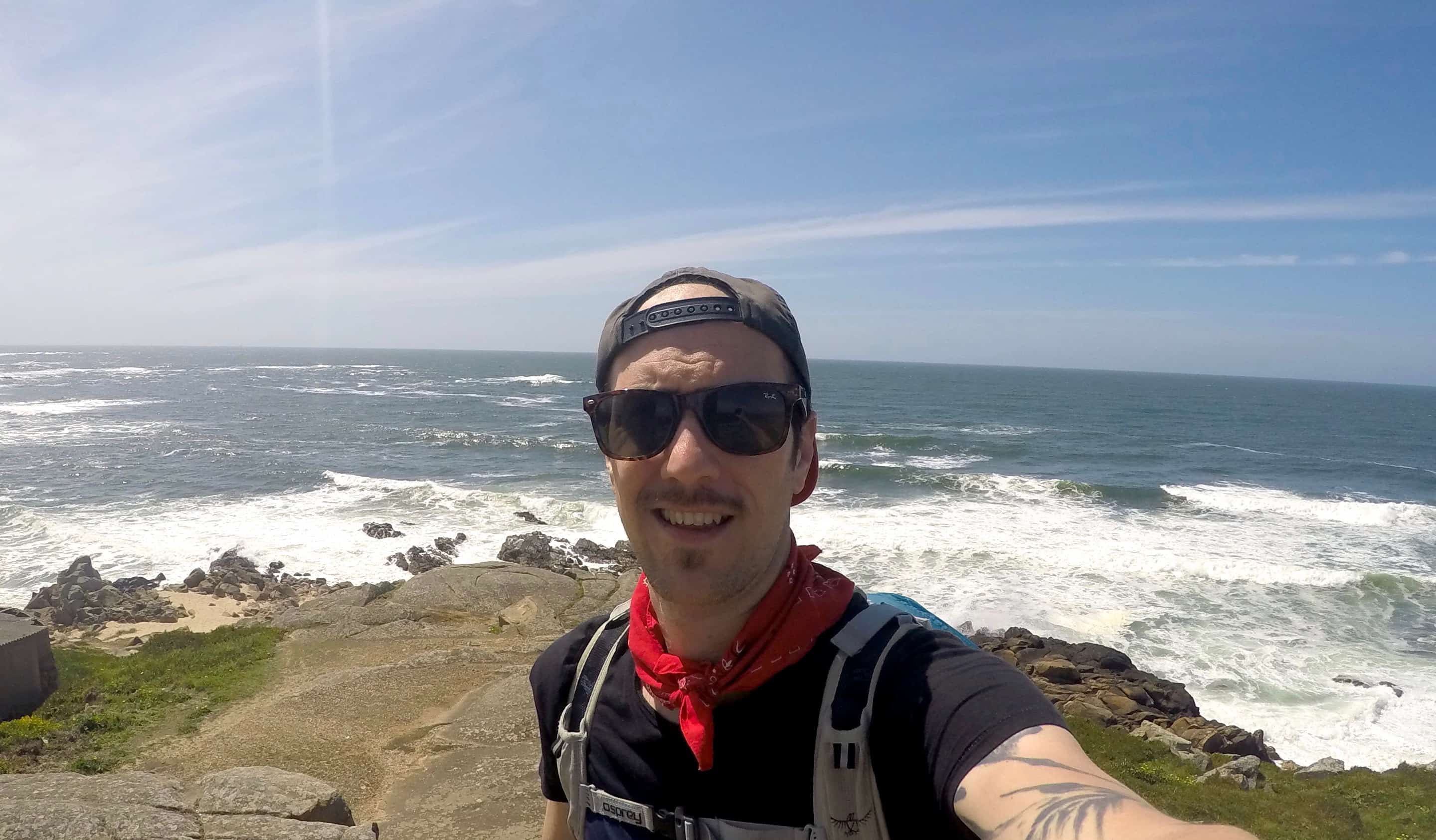
As an omnivore, traveling is pretty easy on my stomach. There’s nothing I won’t eat (or at least try once. Like those fried maggots in Thailand) and I don’t have any food allergies to worry about. Outside of an inability to handle spicy food, I’m pretty lucky. I know scores of travelers who’s food allergies and dietary restrictions make traveling to many regions of the world very, very difficult. Luckily, thanks to the web and apps, it’s become a lot easier to convey your dietary needs to shop owners around the world! In today’s article, I sit down with our community manager and fellow blogger, Chris, who has been a vegan for 12 years. He shares with us how he does it, his favorite resources, and his advice for the non-omnivores out there!
Nomadic Matt: Tell us about yourself!
Chris: I live abroad in “sunny” Sweden. I’m vegan, straight-edge, Buddhist, and balding. I’m also a huge nerd (I have a Star Wars tattoo and am a big fan of Dungeons and Dragons).
I grew up in small-town Canada, and after university, I intended to go to law school and get a respectable job, make mad cash, and live the Canadian Dream. I worked two jobs to put myself through school and was able to graduate without any debt. However, somewhere along the way I realized I wasn’t really loving the path I was walking.
Growing up, it was always assumed that if you did well in school, you were sort of obligated to go to university, get a good job, marry, have 2.5 children, etc, etc.
It wasn’t until after my first year of university that I finally had the space and time to really think if I wanted that path. While everything was going well – I was getting good marks, eating well (ish), and going to the gym every day – I didn’t feel challenged by my current situation. There had to be more to life than just jumping through hoops and building a routine. It was then that I gave up my plans of following the career-house-family model and started to look for alternatives ways of living.
How did you get into traveling?
Honestly, I think it all started when I was 10. My dad and I went down to Florida to Disney for my birthday, and — not surprisingly — it was an amazing time. I have lots of fond memories from that trip, though what stands out the most isn’t what you’d think. What started me down my road of travel? A seatbelt.
Some of you will remember the car company Saturn. They used to have a car with an automatic seatbelt. It was a cumbersome contraption, but as a 10-year-old, having just arrived in America for the first time, I thought it was amazing. An automatic seatbelt?! It blew my mind. I was captivated by it. I think that’s where it all started. From then on, I realized that there were so many mysterious and exciting things out there. And I wanted to uncover them all.
Ten years later, I was hacking my way through the jungles of Costa Rica. While there, I almost got killed by a jaguar while hiking in the rain forest. It had stalked my group to the top of a mountain, and when I was more or less alone it started to weave toward me. By the time it got close, my guide showed up and we scared it away (though it did stalk us for another few hundred meters). A week later I was chased by a crocodile while kayaking up a river (talk about bad luck, right!?). That trip rekindled my desire to travel and inspired me to change my priorities. I left university early and moved to Japan to live at a Zen monastery where I could have some time to figure out what I wanted to do in life.
I’ve more or less been traveling since.

You’re vegan. Is it easy to travel as a vegan?
For the most part but it all depends on your destination and your preparation. In North America and Western Europe, most people understand what you mean when you say you’re vegan or vegetarian. Moreover, if they don’t understand, they likely speak enough English that you can clarify. Many cities in Europe are actually amazing vegan hubs (Berlin and Glasgow to name two).
The trouble arises when you visit somewhere with a high language barrier that also has very different cultural food norms. There are many countries in the world where being vegan/vegetarian is something uncommon and perhaps not entirely understood. In countries like this, the difficulty isn’t finding food — basic staples like rice and vegetables and fruits can always be found at markets and stores — but interacting with locals and having to explain your diet, which can come off as some sort of implicit judgment of their own diet. If you don’t do your research, you can get into some awkward situations.
As a vegan, we sometimes miss out on cultural exchanges. Having a local invite you into their home is something many travelers dream of but, as a vegan, this can be tricky as you now have to politely explain that you cannot eat the food they’re offering. It’s a fine, challenging line to walk.
What are some good resources and tools for vegans planning to travel?
Happy Cow is the go-to resource for finding vegan restaurants abroad; it’s like vegan Yelp. You can read reviews and find information about menus, hours, and locations. This is my main resource when I’m searching for good vegan grub abroad.
Another tool I use is Couchsurfing. While there are vegan groups there that you can browse, I just like to message local vegans directly and say that I’m coming to their city and would love to hear their suggestions. People are always happy to share their thoughts, and I’ve come away with some great tips from this. Not only can you ask about restaurants but you can inquire about good grocery stores for vegan options, as eating out every meal will get pricey.
Don’t hesitate to ask the staff of your hostel/hotel or the host of your Airbnb. They are equally valuable resources, too!
Lastly, there are lots of great vegan travel blogs, too. Some of my favorites are Burger Abroad, Justin Plus Lauren, Vegan Food Quest, and of course, my own blog, Lessons Learned Abroad.
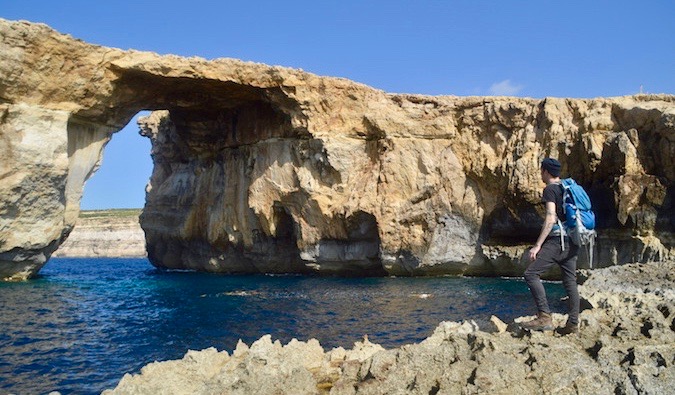
Have you had any dietary mishaps while traveling?
Many! Just like every other aspect of traveling, your planning will only take you so far. Sometimes things go off the rails and you need to adapt.
When I was in Mongolia, my partner and I were invited to lunch by a local. We were a bit hesitant, considering our diets (my partner is vegetarian), but didn’t want to be rude. So we accepted. It turns out the family had already eaten — they just wanted to make us a meal. They served up some meat dumplings (there are not many cows in Mongolia, so I think it might have been horse meat), kimchi, and fermented milk green tea. Not exactly my standard vegan meal.
But we adapted.
I pretended to drink the tea while my partner downed her glass. We then covertly swapped cups so they wouldn’t notice, thereby leading them to think we both drank the tea.
I ate all the kimchi and then tried to gesture that I was full — they didn’t speak English, after all, so gestures were all I had. They insisted I eat some dumplings, and not taking no for an answer, I had to bite the bullet. I picked up a few and popped them into my mouth. As soon as they looked away I spat them out and put them into my pocket. They were so hot and greasy, they kind of burned my leg as they dripped through my pocket but I played it cool.
After the meal we all went outside and their dogs started hounding me. I tossed them the scraps, and no one was the wiser.
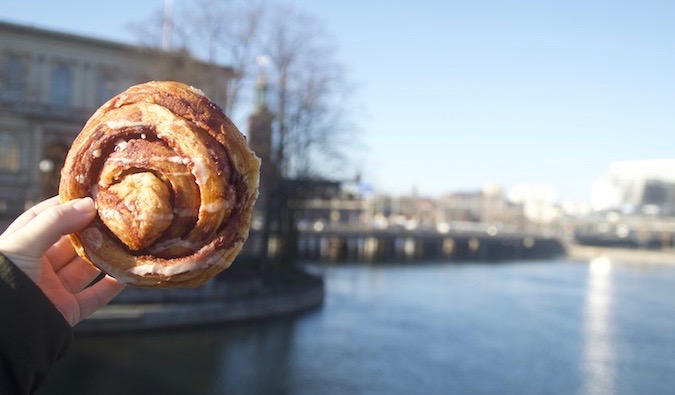
How do you get over the language barrier and let someone know your dietary needs?
There are three basic ways to do this:
- 1. Write it down. I write down phrases in my notebook for each country I visit. I’ll write down things like “I do not eat meat” so that I can show it to servers at restaurants. I’ll write it in the local language, and then phonetically in English so I can read it aloud without too much embarrassment. This is my standard method — which probably hints at just how old I am — though I am slowly coming around to this next method.
- 2. Use Google Translate. If you have Internet access, then Google Translate is a great method. To be safe, I suggest downloading the necessary languages so you have access offline. You can also use the app to take photos of menus and translate them, which has been super helpful on many occasions!
- 3. The Vegan Passport. This little book has helpful vegan phrases you can use as you travel. There are versions in around 80 different languages, making it a pretty handy resource for an RTW trip. It costs around $10 but could likely save you some trouble on the road.
Where are the best places in the world to travel to as a vegan?
Nowadays you can find vegan restaurants pretty much everywhere. That being said, there are a few places in the world that showcase some impressive offerings. NYC, Berlin, Toronto, and Austin are all great vegan hubs. I’ve had some of the best food of my life in those cities. Additionally, countries with a higher percentage of vegetarians and vegans (like Germany or Sweden) also make it easy to find vegan food products in grocery stores, covering you for all those days you don’t want to eat out (or can’t afford to!).
Are there any places that are really difficult?
Not surprisingly, I found Russia, Norway, and Mongolia to be challenging as a vegan. Essentially, if a country doesn’t grow many fruits or vegetables then you are sort of out of luck for a lot of options. Don’t get me wrong, I loved all three place but my diet there was mostly bread and unflavored instant noodles. There just weren’t a lot of options.
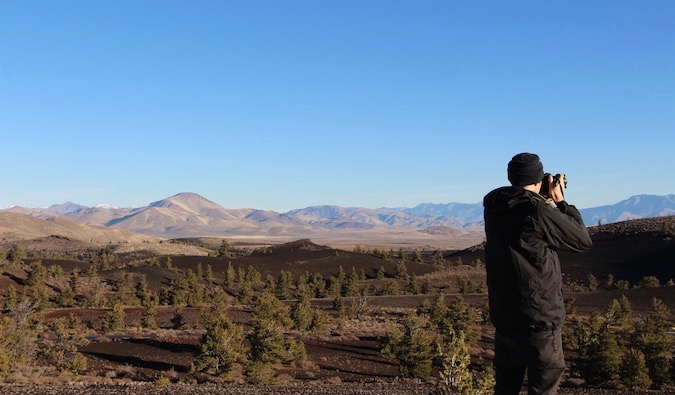
How do you manage in countries with few vegan options?
Plan ahead! Always travel with some extra granola bars or trail mix from home. This will keep you covered during those few instances when it is hard to find a proper meal. I took 30 power bars with me to Russia and ate almost 100 granola bars during my 800km walk along the Camino.
Traveling as a vegan means your meals will not always be glamorous. Making your diet a priority, you sometimes will end up having some pretty bland and unexciting meals. It won’t always be awesome vegan food, so be prepared for those rough patches by bringing some backup snacks. You’ll thank me later.
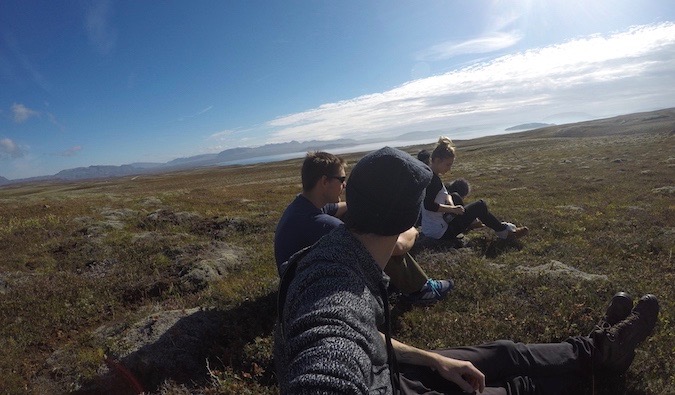
You’re an avid Couchsurfer! Many people are put off by Couchsurfing, since you are essentially staying with a stranger. Why do you like it?
Honestly, CS is my favorite way of finding accommodation precisely because you are staying with a stranger. I like it better than hostels because you generally have more privacy and it is quieter than hostels (no snoring backpackers!). You also get to connect with a local who can answer all of your travel questions. This is a priceless resource, making CS worth its weight in gold! On top of that, there are lots of events and meetups available on Couchsurfing, which are great ways to meet other locals and travelers. The fact that it is free is just the icing on the cake.
What tips do you have for those considering Couchsurfing as a means of find accommodation?
If you are planning on using Couchsurfing as your primary accommodation resource, you’ll want to do at least these three things:
- 1. Get verified. This means you pay a small fee and have your address and phone number verified. You can also send in a copy of a passport, too. What this does is show everyone you’re a legit human being and not someone trying to scam the system.
- 2. Add tons of photos and information to your profile. Be detailed, so everyone can get a sense of your personality. Share your favorite movies and books, your past trips and adventures, and anything else you think is interesting! Hosts generally prefer to have guests that they share interests with, so this is the best way to find like-minded CSers.
- 3. Get references. References are the backbone of Couchsurfing. Without them, you’ll almost never find a host. Find friends or coworkers who can vouch for you so that you have some references before you travel. That will increase the odds of you finding a host tenfold.
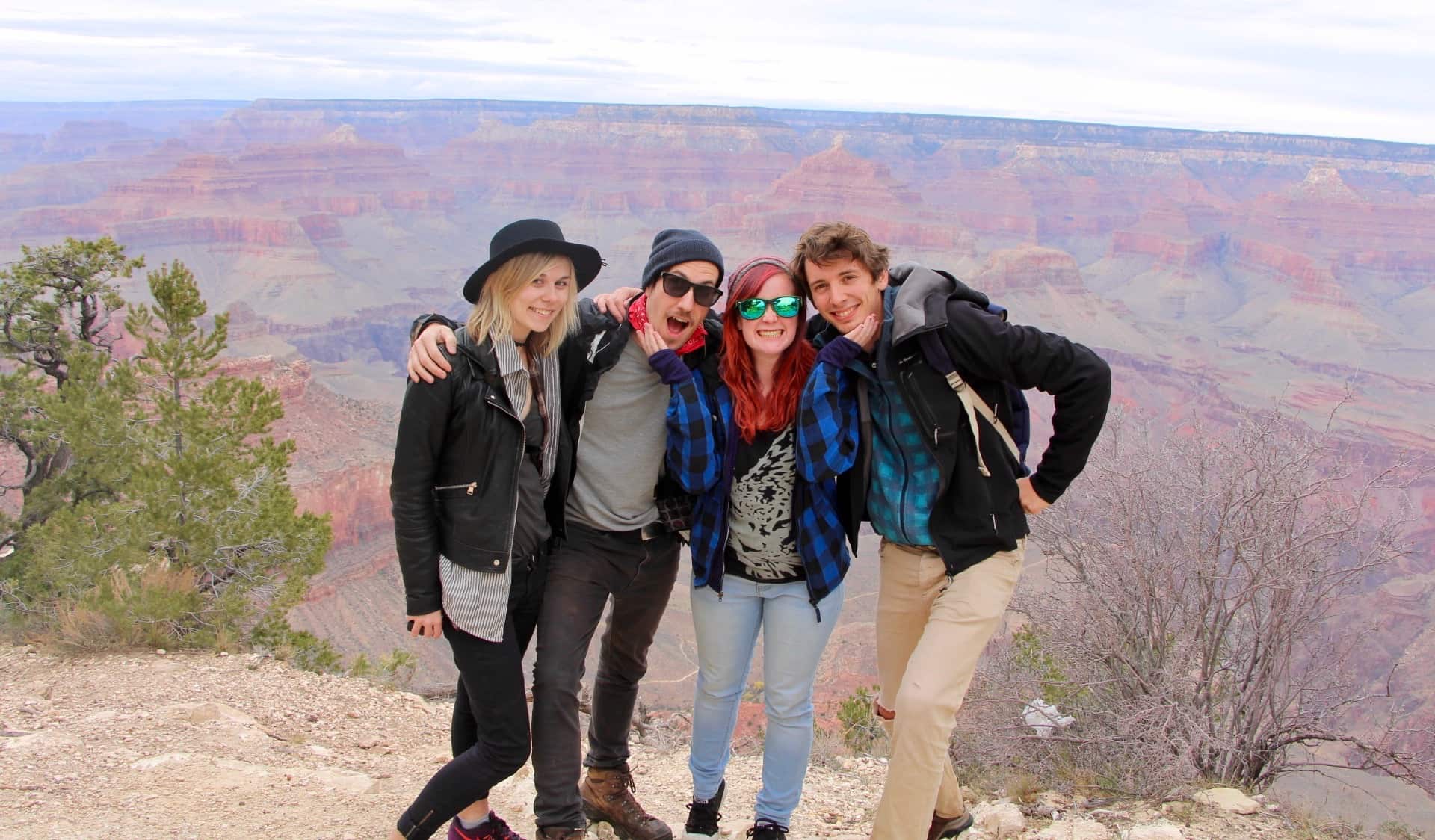
You’ve been traveling for a while. What’s your #1 tip for new travelers?
If I had to boil down everything I’ve learned into one tip it would be this: slow the heck down. I’ve seen too many people rush around, trying to check countries off their bucket list, only to spend most of their trip on buses and planes and trains. Rushing around really takes away from the experience; you are too hurried to really stop and smell the roses. Sure, you may get some great photos for your Instagram, but there is much more to traveling than that!
By slowing down, you really start to soak up each destination. You allow yourself more time to get off the beaten path and to embrace new opportunities as they arise. If you are rushing around, you won’t be able to change your schedule if you find a place you really like. Or what if you meet some cool people who invite you to tag along on their journey? This wouldn’t be possible if you were committed to a hasty itinerary. It’s also cheaper since you won’t be spending so much time and money on transportation!
So, when it comes to traveling, remember: less is more.
Chris is a stalwart budget traveler who is always on the lookout for a good adventure. A vegan of 12 years, he is adept at navigating the ups and downs of traveling with dietary restrictions. When not wandering the world he can usually be found in Gothenburg, Sweden, plotting his next adventure. For more vegan tips and travel tales, you can visit his bog, Lessons Learned Abroad. You can also find him running our forums and Superstar Blogging community.
The post How to Eat Around the World on a Vegan Diet appeared first on Nomadic Matt's Travel Site.
from Nomadic Matt's Travel Site http://www.nomadicmatt.com/travel-blogs/eating-vegan-travel-interview/












